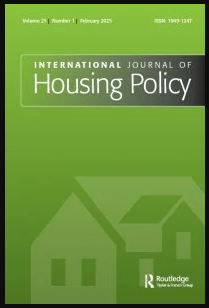Editorial – International Journal of Housing Policy
Housing is not only an outcome but also an engine of socio-economic inequality. In many cities across the world, there are weekly headlines about the ‘housing crisis’—our home countries Australia, the Netherlands and the UK being no exception. In Australia, renters report stories of having to frequently move further away from jobs and schools to find more affordable accommodation. Since the Covid-19 pandemic, even once affordable regional towns no longer offer much relief from rising rents. An increasing cohort of young adults is facing renting for life, a precarious housing future characterised by very little security and stability over lease length or rent increases. In the Netherlands, late 2021 saw the largest housing protests take place since the 1980s, with tens of thousands of people, many of them young adults, taking the streets in Amsterdam, Rotterdam and other cities. These protests highlighted the wide range of housing problems: from rapidly increasing levels of homelessness and parental co-residence, to growing social divides between owners and renters. Housing has remained high on the public and political agenda ever since. In the UK, policy-makers continue to tout homeownership as a preferred tenure of choice, despite mounting difficulties for many to access the tenure, particularly in London. Renting privately for longer periods of your life has become the ‘new normal’, especially for younger people without significant savings and parental support. While highly precarious and unaffordable, private renting often remains the only available alternative in a housing system with highly inaccessible homeownership and a severe shortage of social rental housing. This process of rising precarity among the ‘housing-have-nots’ contrasts sharply with an accelerated accumulation of property wealth and rental income among the ‘housing-haves’.

